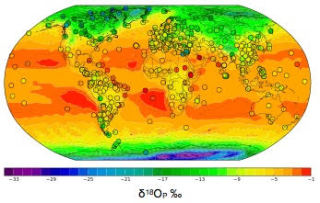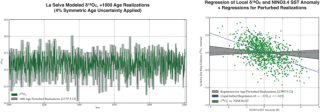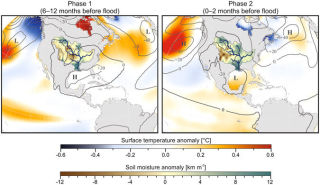Our lab's research combines climate information from the Last Glacial Maximum to the Last Millennium with the present to improve predictions of future climate. Our work focuses on evaluation of general circulation models, stable water isotope ratios, and high-resolution paleoclimate observations such as ice cores, tree rings, and corals. We use this information to constrain modes of natural climate variability, like the El Nino-Southern Oscillation and the Asian Summer Monsoon.
Current Projects: SWI-SWIM Water Isotope Enabled Modeling with NCAR!
Read more here: https://project.cgd.ucar.edu/projects/sci-swim/

Isotope-enabled climate models facilitate the inter-comparison of climate proxies with GCM output by simulating stable water isotopes in the hydrological cycle (e.g. δD, δ18O).

Proxy System Models use a tiered modeling approach, capturing the essential aspects of the physical, biological, and geochemical ways in which proxy archives record climate changes. Proxy system models can be used to link climate model simulations with paleoclimate reconstructions, maximizing the usefulness of both for characterizing climate changes through time.
GITHUB: www.github.com/sylvia-dee

Coupling paleoclimate data from the Last Millennium with GCM simulations yields enhanced estimates of The El Nino-Southern Oscillation's rainfall impacts in the United States and the Asian Summer Monsoon region.